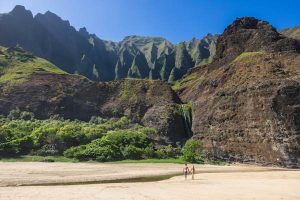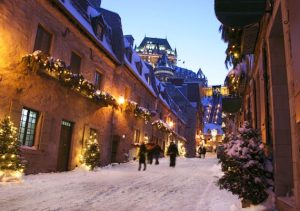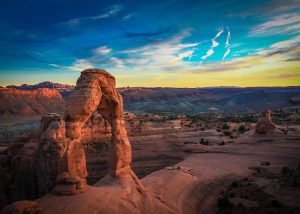
From the lush and humid forests of the central mountains to the idyllic surfing beaches of the northwest, Puerto Rico is a haven for ecotourism. If it’s nature that entices you here, its the beaches and the historical cities that will keep you enchanted. Come for the outdoor adventures – hiking, zipping, surfing – but stay for the heritage, culture, sand, and amazing Caribbean nights.
Here are the 14 best things to do in Puerto Rico for 2023 that show off the island in all of its multifaceted glory.
1. Bar hop along Calle San Sebastián in San Juan
Lined with historic buildings, including San José church, the historic Hijos de Borinquen bar, and Casa Blanca – former home of the island’s first Spanish governor – Juan Ponce de León, La Calle San Sebastián allows visitors the chance to savor a little bit of Old San Juan. Named after Saint Sebastian, this cobblestoned street is one of the most beautiful on the island.
By day, you can snap photos of beautiful, colorful balconies, walk the narrow alleyways and peek between the buildings for a glimpse of the Atlantic ocean. At night, there’s plenty of bar hopping to do. Fancy dancing to anything from salsa to electronic beats? What about sipping top-notch cocktails made by expert mixologists? Head over to ultra-hip La Factoría.
If you prefer a chilled-out place to hang, Taberna Lúpulo has open-air seating and a massive selection of local and international beers. Prefer to grab a few Medalla beers and dance to some reggaeton? La Sombrilla Rosa is where you want to be. There are plenty of watering holes to choose from, so put on your best sneakers and enjoy the humid sea breeze while you wander from bar to bar.
Immerse yourself in the best experiences the world has to offer with our email newsletter delivered weekly into your inbox. 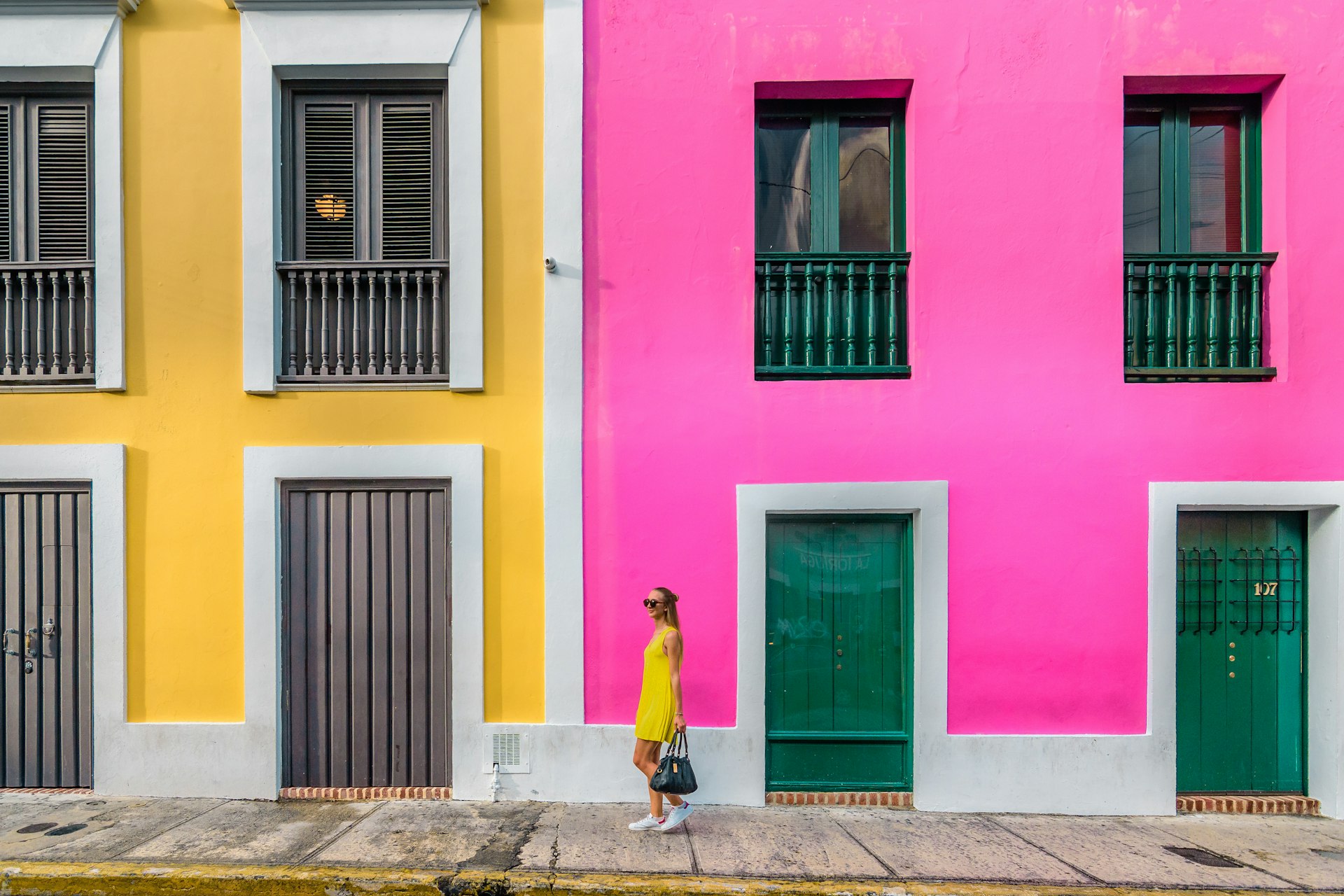 Old San Juan is a feast for the senses © Alex W/Shutterstock
Old San Juan is a feast for the senses © Alex W/Shutterstock
2. Take an architectural tour of Old San Juan
Walking through the cobblestone plazas and narrow alleyways of Old San Juan is an essential Puerto Rico experience. There’s no need to have an itinerary here – just get lost in a maze of colorful, Spanish colonial-style houses with famously ornate balconies, lush courtyard gardens and ceilings adorned with intricate mosaics of Catholic saints and virgins and ornate criollo tiles.
There isn’t a corner of the islet that isn’t steeped in history, from historic churches to grand homes from the 18th and 19th centuries. You can wander around the neighborhood and gawp for free but for insights into San Juan’s architectural heritage and rich political, social and economic life, the Puerto Rico Historic Buildings Drawing Society runs a series of walking tours exploring landmarks such as Casa Blanca, the abandoned Normandie Hotel, sailors’ haunt Calle Sol, and the city’s lovely parks and plazas.
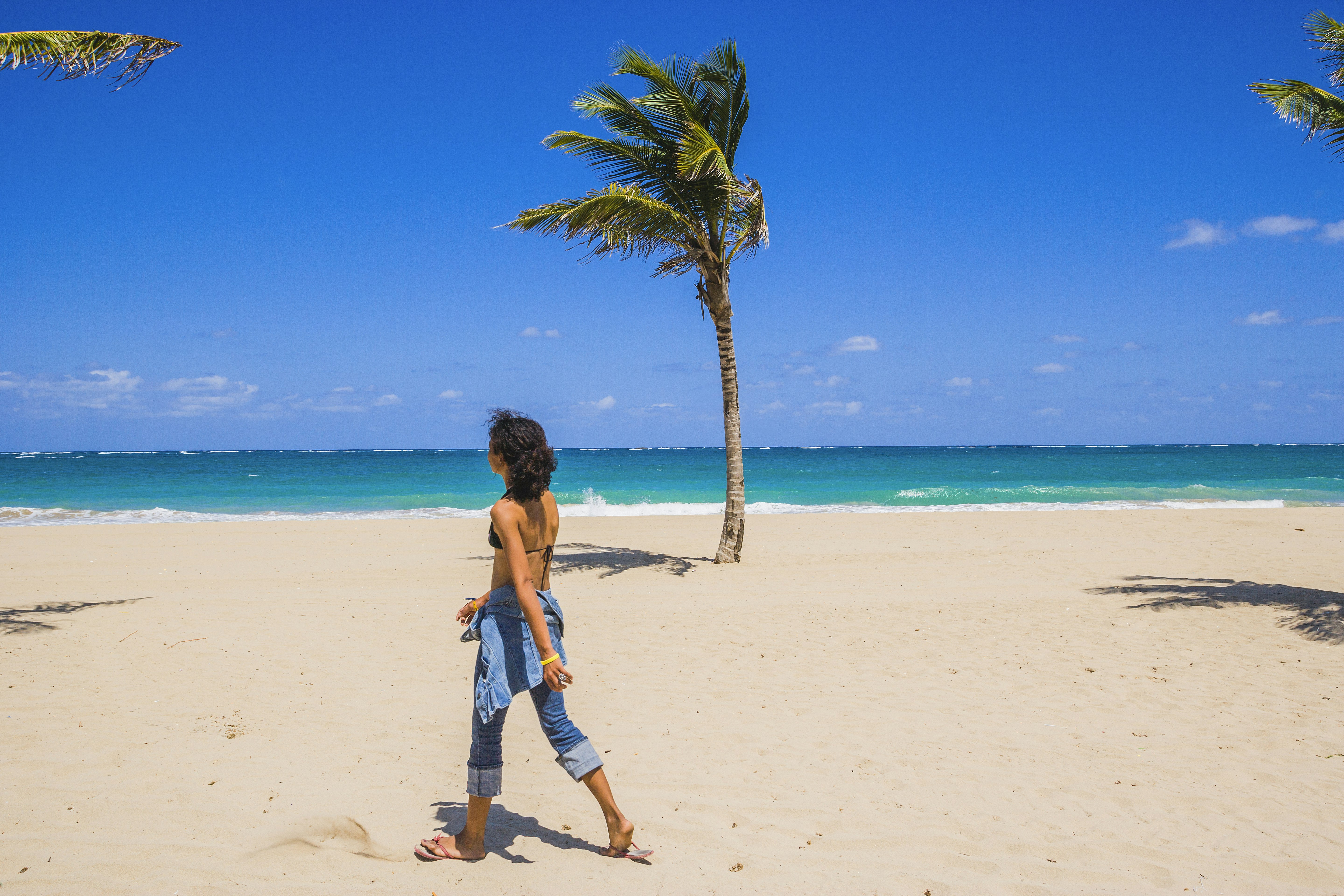 Isla Verde serves up some of the finest sand in Puerto Rico © Maremagnum/Getty Images
Isla Verde serves up some of the finest sand in Puerto Rico © Maremagnum/Getty Images
3. Have a beachside craft beer at Ocean Lab Brewing Co
Located inside the VIVO Beach Club on San Juan’s Isla Verde Beach, which faces one of the most beautiful stretches of white sand on the Puerto Rico, Ocean Lab Brewing Co is the place to come for premium craft beers and a picture-perfect drinking location. There’s a full menu too; the chicken and longaniza sausage sliders and fried whole snapper fish come highly recommended.
The trade winds coming from the east bring soothing breezes and beers made with local ingredients like passion fruit, grapefruit and blood orange will leave your tastebuds imploring you to up sticks and move to the Caribbean. Serious beer enthusiasts can take a brewery tour and get a first-hand look at the brewing process. Call ahead for tour hours.
4. See a drag show at Loverbar
The island’s high-octane drag scene has produced some mega-talented queens, including Jessica Wild, Yara Sofia and April Carrión, who wowed TV audiences in RuPaul’s Drag Race. The epicenter of Puerto Rico’s fiercely daring underground drag scene is Loverbar, a spirited LGBTQI+ hub in the Río Piedras neighborhood in San Juan, right beside the University of Puerto Rico’s main campus.
The bar is a dream, with pastel pink walls, a low-swinging chandelier, and art on the walls. Loverbar’s stage hosts drag shows most weekends, with a revolving line-up of drag queens and kings performing shows with pop culture themes such as ‘Vampires’, ‘Beetlejuice’, and ‘Teen Titans’.
In between drag shows, you can watch LGBTQI+ comedians, dance to queer-friendly reggaeton and take a shot at winning the karaoke prize. Loverbar also has a full kitchen, serving a vegetarian and vegan menu. One cautionary note: the Río Piedras district is partly derelict and mostly empty at night, so travel in a group and stay on the main roadway, Ponce de León Ave.
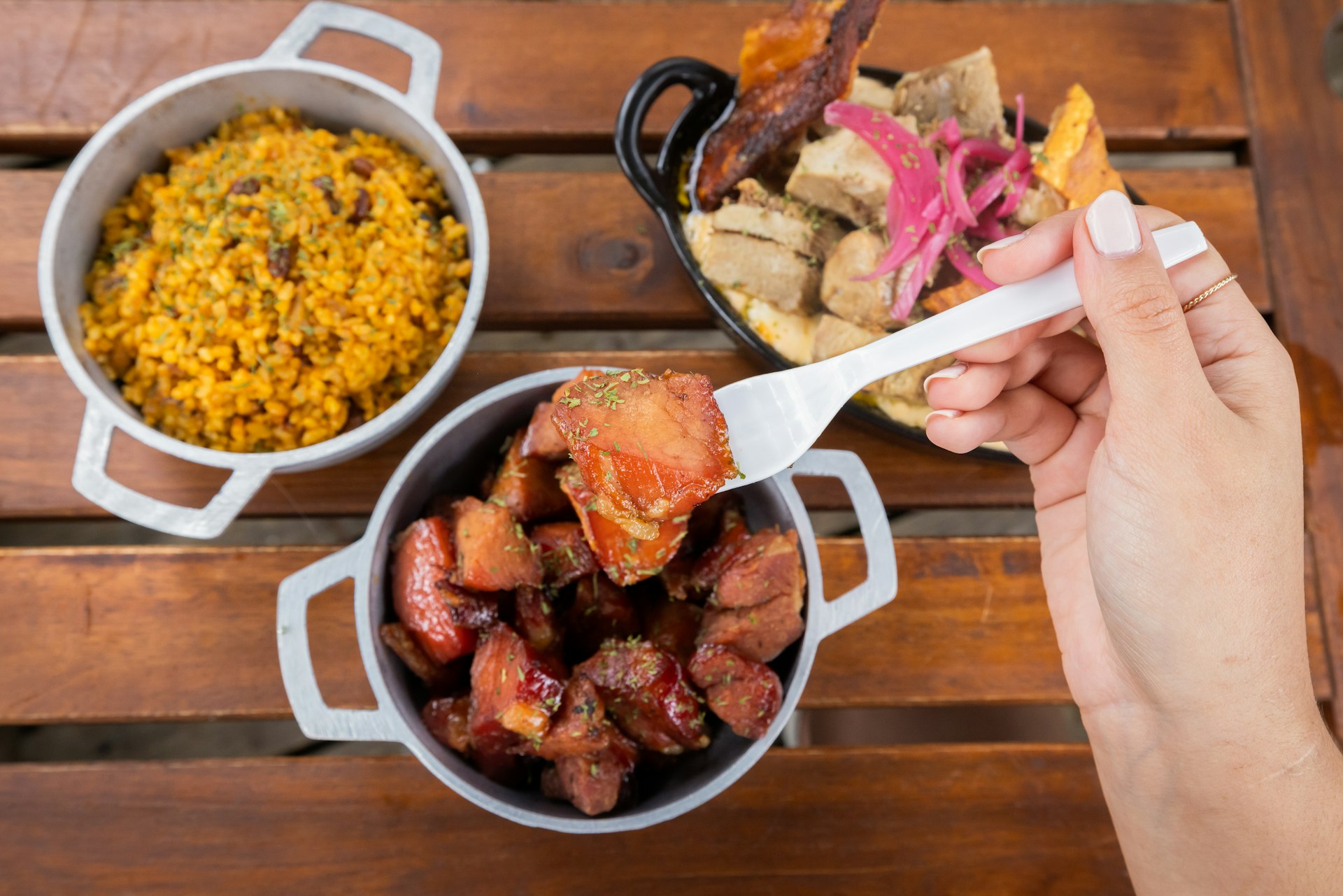 The Ruta del Lechón-Guavate is a great way of trying Puerto Rican food © Alejandro Granadillo/Lonely Planet
The Ruta del Lechón-Guavate is a great way of trying Puerto Rican food © Alejandro Granadillo/Lonely Planet
5. Eat your way along the Ruta del Lechón-Guavate
There’s no better way to get a taste of traditional Puerto Rican flavors and the island’s folklore than by taking a tour through Guavate in Cayey. Known as La Ruta del Lechón – the Roast Pork Route – the road to Guavate takes you deep into the mountains flanking the town of Cayey, where you can restaurant-hop in search of the best spit-roasted pork and steamy arroz con gandules (rice and pigeon peas) on the island. It’s a ritual that’s revered by Puerto Ricans, especially at Christmas time.
Each establishment is family-owned, and most have informal picnic-style tables where you can mingle with other patrons and have a few drinks, and perhaps even dance to música típica (folk music). It’s a nourishing experience in every sense of the word, and a great way to dive into the wet, mountainous central region. Such a beautiful tradition inevitably draws a crowd, so if you go on a weekend, arrive early or be ready to wait in line.
.jpg?auto=format&q=75&w=1920) Epic views through the “window” at the Cueva Ventana © IsaacRuiz / Getty Images
Epic views through the “window” at the Cueva Ventana © IsaacRuiz / Getty Images
6. Hike the trail to Cueva Ventana
The beautiful cavern known as Cueva Ventana is an architectural beauty carved by nature and thousands of years of hard wind and rain in the Arecibo region in northwest Puerto Rico. Put on some good sneakers or hiking boots and you can take a guided tour through green mountain passages and dark limestone caves, where you can see ancient Taíno petroglyphs and spot some of the 16 species of bats that call the cave system home.
The hour-long trek, one of the best treks in Puerto Rico, takes you to the cave mouth and its main attraction, a rocky “window” offering breathtaking views of the Río Grande de Arecibo and the mountains of Utuado. Guides are fonts of knowledge about pre-Columbian history and geology, and they’ll keep you safe as you explore with helmets and flashlights. The area is great for photography but don’t use a flash or any other lighting that might disturb the wildlife.
7. Make your own cheese at Vaca Negra
It’s not difficult to get a taste of rural life in Puerto Rico. Fertile soil and the warm and well-watered climate allow crops to flourish year-round and the island is dotted with farms raising local produce and livestock. At Vaca Negra, in the town of Hatillo in the northwest, you can go a step further and make your own Puerto Rican-style aged cheese.
This is a relatively new concept on the island, as Puerto Rican cheese is traditionally freshly prepared. Using raw cow’s milk from Hatillo’s cattle ranchers, staff will help you create some of the best-aged cheese you’ve ever tasted – you can even opt for lactose-free. There’s one small hitch: the cheese takes approximately two months to reach maturity. If you’re only passing by, you can purchase some of their cheeses and yogurts pre-made from the farm store or swing by for brunch in true Puerto Rican country style, one of the best food experiences on the island.
 Toro Verde is one of the biggest and best adventure parks in the Caribbean © Andrew Lipovsky/NBC/NBCU Photobank/Getty Images
Toro Verde is one of the biggest and best adventure parks in the Caribbean © Andrew Lipovsky/NBC/NBCU Photobank/Getty Images
8. Go ziplining at Toro Verde
Adrenaline lovers rejoice! Deep in the mountains of Orocovis lies Toro Verde, one of the biggest and best adventure parks in the Caribbean. The brave can ride ziplines such as ‘The Monster’, a 1.5 mile (2.5km) cable that whooshes across the forested slopes, reaching speeds of up to 95mph (152.8 km/h). It’s no exaggeration to say that you’ll get a bird’s-eye view of nature.
The rest of the park is a wonderland for adventure lovers, with thrilling rock climbing walls, rope fields, obstacle courses, hanging bridges, free falls (with safety gear, of course), suspended cycling and moonlight tours.
9. Go canyoning at Cañón San Cristóbal
The San Cristóbal Canyon is one of the most precious and underexplored natural treasures in Puerto Rico. Nestled between the towns of Aibonito and Barranquitas in the Cordillera Central mountain range, the canyon was once used as an unofficial landfill site until local non-profit organizations stepped in to save the site for future generations.
Today, San Cristóbal Canyon is the setting for one of the most thrilling hiking trails on the island, where you can rappel, hike and swim under waterfalls, surrounded by lush green jungle. You’ll need to be in good physical condition though as the trails are challenging: the canyon is 500ft (152m) deep and the hike is more than 6 miles (9km) long, most of that uphill through rocky terrain.
Don’t go alone – the trails are largely unmarked. Guided hikes and tours are led by conservationist group Go Hiking PR, run by Puerto Rican teachers, students and geographers.
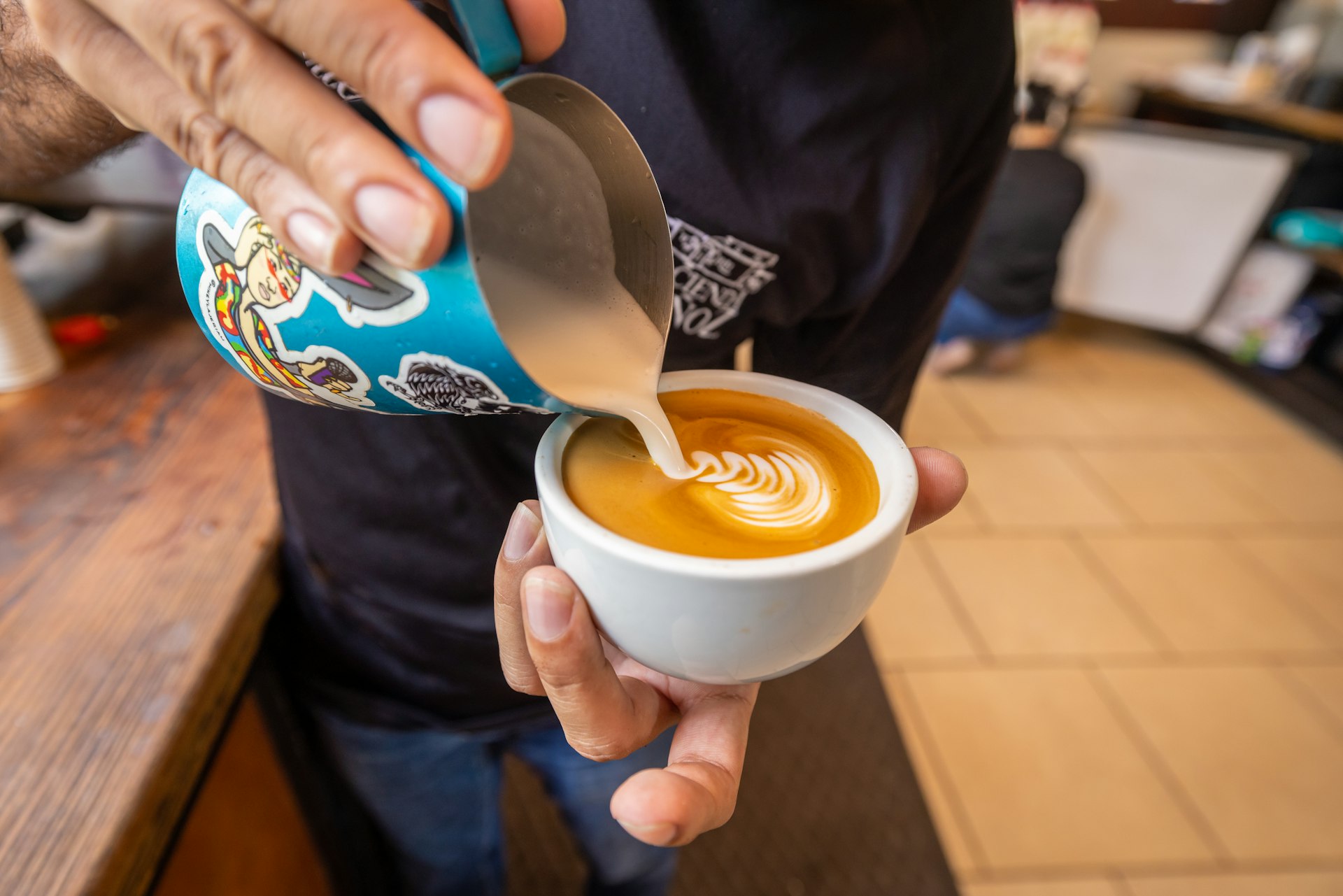 Puerto Rico has some amazing coffee © Alejandro Granadillo/Lonely Planet
Puerto Rico has some amazing coffee © Alejandro Granadillo/Lonely Planet
10. Sip coffee the Puerto Rican way at Hacienda San Pedro
In Puerto Rico, coffee is a ritual not taken lightly. Unlike in the United States, you’ll rarely see people drinking coffee in their cars on their way to work or rushing with a cup of coffee in their hands. Instead, coffee in Puerto Rico is a state of mind, a little respite from the world outside.
Join locals appreciating their coffee at Hacienda San Pedro in the mountains of Jayuya in the Central Mountains, which dates from the 19th century and has been owned by four generations of the Atienzo family.
You can tour the coffee fields where the beans are picked by hand and then toasted in equipment that’s been used for more than a century. The hacienda has a museum where you can see original artifacts and learn more about the processes that make Puerto Rican coffee so amazing. Before you leave, stop for a hot cup of Joe and pick up some of the best beans on the island to take home.
11. Get a history lesson at Centro Ceremonial Indígena Tibes
Ceremonial grounds, religious effigies and plazas formerly occupied by Puerto Rica’s indigenous population – specifically the Ígneri and Taíno tribes – make the Centro Ceremonial Indígena Tibes in Ponce an essential stop if you want to understand the island’s pre-colonial past.
Archeologists have dated the site, located in the Tíbes sector of Ponce, to between 400 BCE and 1000 CE. Annual excavations have uncovered indigenous pottery, foraging patterns and instruments that provide tantalizing glimpses of the civilizations that populated Puerto Rico before the arrival of the Spanish. The site has a museum and offers guided tours, but it’s best to call ahead for hours and availability.
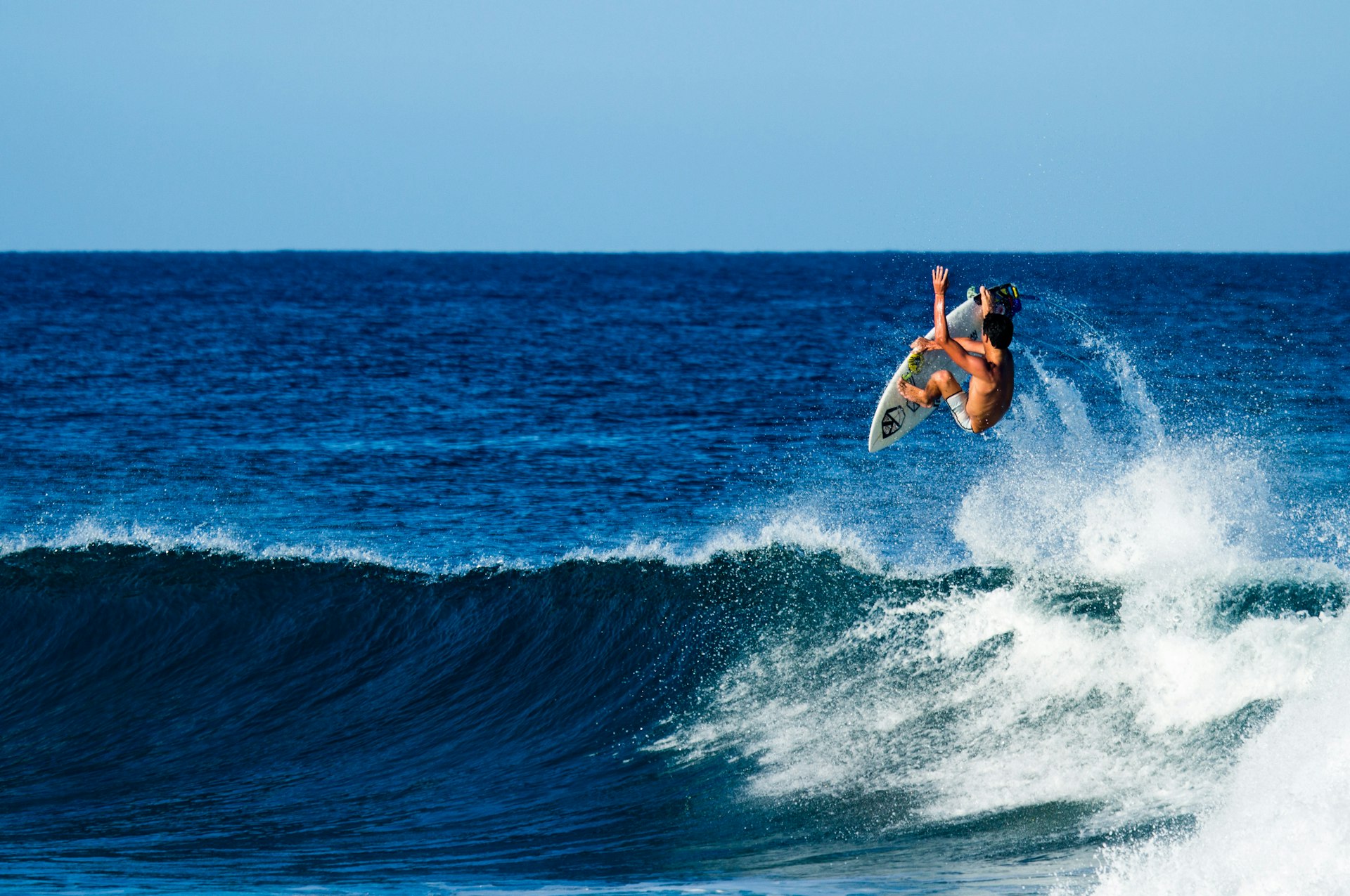 A surfer catches some air in Rincón © James McGraghan / 500px
A surfer catches some air in Rincón © James McGraghan / 500px
12. Surf the waves in Rincón
Ever since Domes beach in Rincón hosted the 1968 World Surfing Championship, surfers of all levels have been flocking to northwestern towns such as Aguadilla, Rincón and Isabela to take advantage of the warm Atlantic waters and catch some of the tallest waves in the Caribbean. Puerto Rico’s surf culture is quite laid back and you’ll learn a lot about beach conservation talking to the surfers who spend their days riding these thrilling breaks. While the Atlantic tends to be a little unruly, the sun rises early and the crystalline water makes it easy to spot the currents so you can make the best of your surf session.
Gas Chambers and Crash Boat Beach in Aguadilla offer waves that range from 5ft (1.5m) in the summer to 20ft (6m) during the winter months. These make for a killer ride, and in between sessions you can take in great views and visit old navy pier ruins. If just want to admire or photograph some big swells and the surfers who ride them, come for the Corona Pro Surf Circuit, usually hosted in the spring. Don’t despair if you don’t know how to surf; private and group lessons are available at many local surf schools. Check out the classes run by Surf Lessons Puerto Rico – owned by pro-surfer, Ramse Morales – and PR Surf Adventures in Aguadilla.
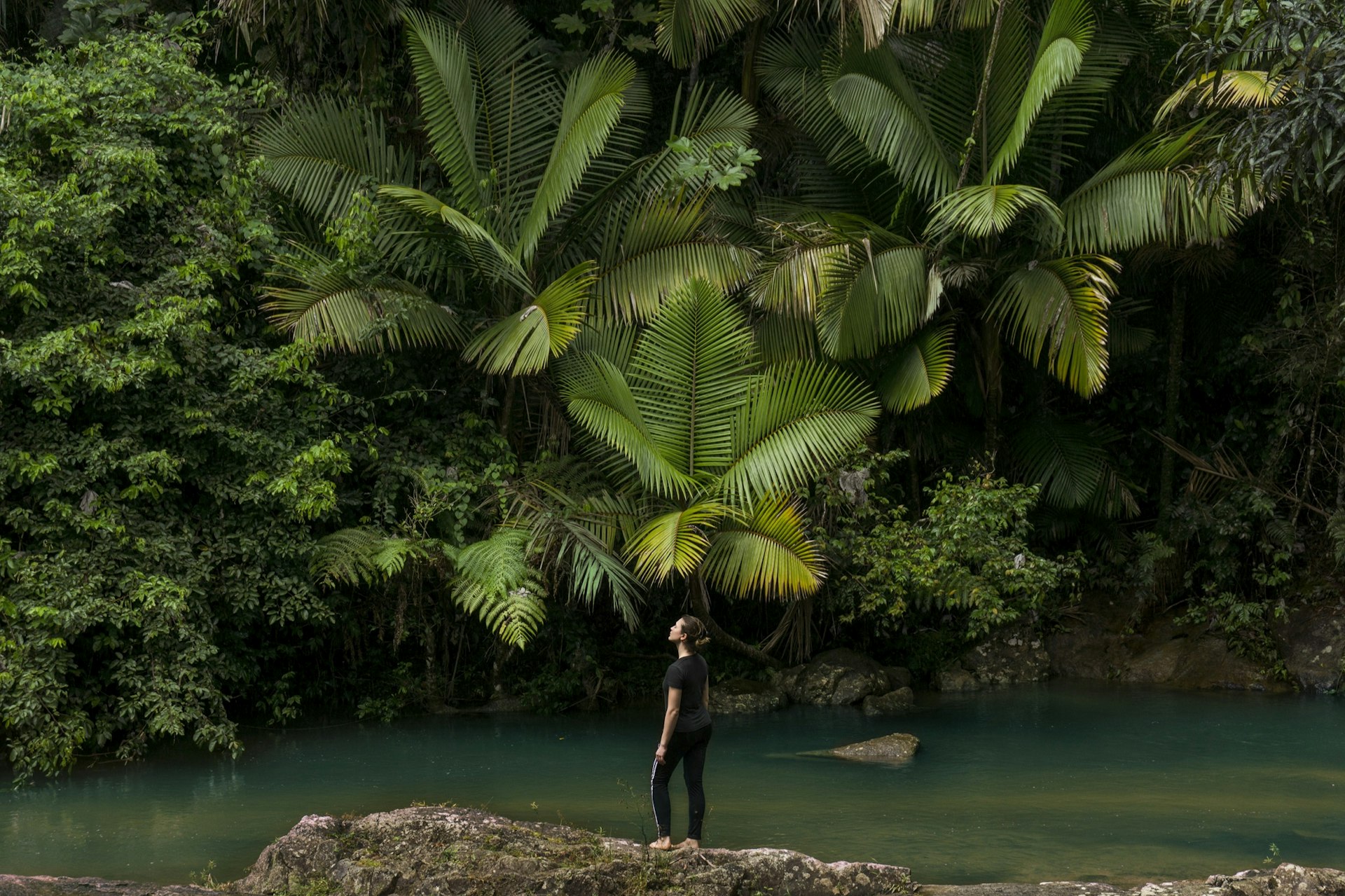 The Corredor Ecológico del Noreste spans six municipalities on the northeast part of the island © Cavan Images / Getty Images
The Corredor Ecológico del Noreste spans six municipalities on the northeast part of the island © Cavan Images / Getty Images
13. Spot wildlife on the Corredor Ecológico del Noreste
The lush, green Corredor Ecológico del Noreste spans six of the most beautiful municipalities in the Northeast of the island. This protected nature reserve offers a chance to bike, boat, surf or drive along roughly 3000 acres of virgin coastline, taking in the lovely beaches at San Miguel, La Selva, Las Paulinas, El Convento and Colorá.
The coastal forests provide a habitat for plentiful bird and animal life, including manatees and leatherback turtles, which nest on the beaches here from March to August. The corridor also spans the municipality of Río Grande, home to the El Yunque National Forest, the towns of Luquillo, Fajardo, and Vieques, and Culebra’s islands, which you can visit by ferry.
Dating from the 16th century, the town of Loíza and its citizens are the keepers of some of the most charming traditions in Puerto Rico. If you happen to be there in July, take part in the Fiestas de Santiago Apóstol, celebrating Loíza’s patron saint. Participants don colorful, traditional vejigante devil masks with three horns and dance the bomba, and artisans sell local crafts.
14. Bike the Piñones Trail
If you’re an avid cyclist, head to the Piñones area on Road #178 along the east coast, where you can feel the wind in your hair as you ride along some of the wildest, most undeveloped coastline you’ll find on the island. The Piñones Trail takes you through mangroves and oceanfront forests, and it runs below sea level, so don’t be surprised if you have to climb a small hill of sand to get to the beaches. Take some mosquito repellent as these critters get really bitey in the afternoons and close to sundown.
Stop at one of the kiosks along the way for some of the best Puerto Rican snacks you can find – including bacalaítos (cod fritters), empanadillas de jueyes (crab pasties) and alcapurrias de camarones (shrimp fritters). A pro tip: rather than stopping at the first kiosk you see, ride further down the road to El Boricua. The line will be long, the wait may be longer, but you’ll thank us later for the flavors – the alcapurrias here are made to order by hand with plantain leaves.
It’s worth sticking a bathing suit in your bag because en route is Vacía Talega, one of Puerto Rico’s best – but lesser-known – beaches. With clear turquoise waters, this arc of uncrowded, palm-backed sand is a real find. Be wary of rip currents here. If the locals aren’t swimming, it’s best to not go in yourself.

